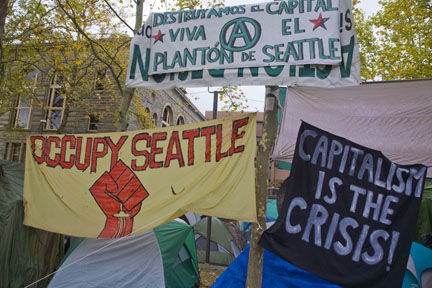
Seattle, Washington – Seattle is the first Occupy I've seen whose banners refer to it as a “planton,” giving credit to the social movements of Mexico, Central America, the Philippines, and other countries for the tactic of living in tents in public spaces as a protest tactic. The US has its own history of occupations, especially factory sit-ins, but for anyone who's walked through Mexico City's Zocalo, the sight of tents full of protesters is very familiar.
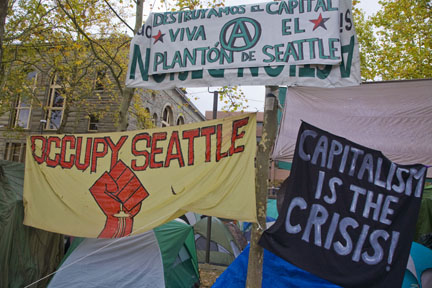
Seattle's diverse and well-organized Occupy community sits in a park next to Seattle Central Community College. In addition to supporting the New York City demonstration, Occupy Wall Street, residents protest economic inequality and its impact on working people, students, the poor and the young. It is a protest by the 99 percent of the people, who are exploited by a system that only benefits the top 1 percent.
At the entrance to the tent city, Antonio Cruz, one of the cooks in the camp kitchen, washes dishes. Occupiers share the work of making sandwiches for lunch for the camp residents. Food preparers got food-handling licenses from the city the day before. Reina Hailee works in the food storage tent.
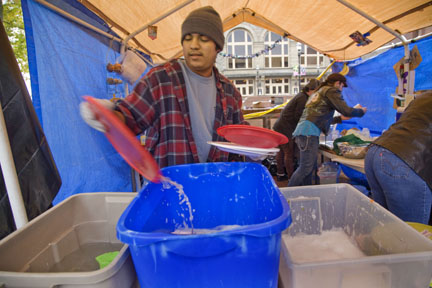
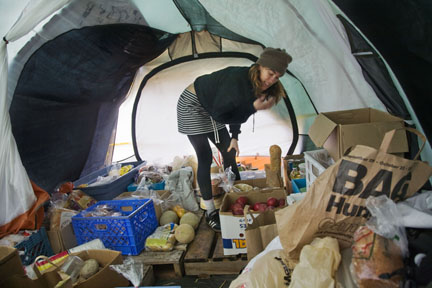
Musicians, painters, muralists, and other artists work in the occupation's art tent. Daniel Thornton plays guitar and sings while painter Ginger MacDonald works on a banner. The Occupy sanctuary also provides a place for those interested in spiritual practices.
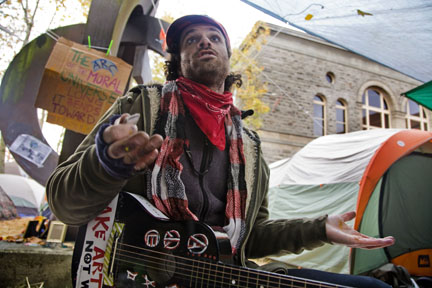


Occupiers take shifts in the information tent giving outreach materials to visitors and media. Out in what residents call the neighborhoods, tent mates Eric Bacon and Christina Purington live in the Southside, just around the corner from “Longbeard” Cameron.
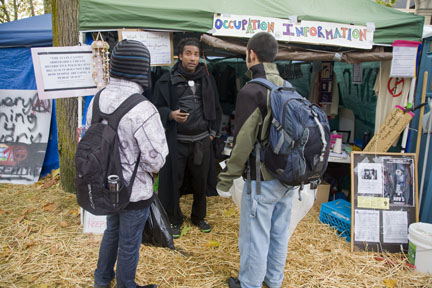

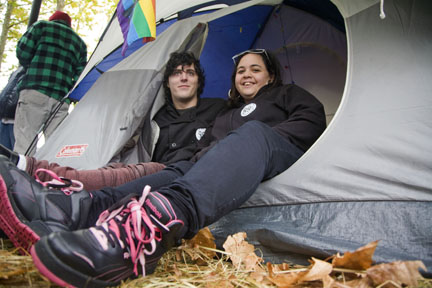
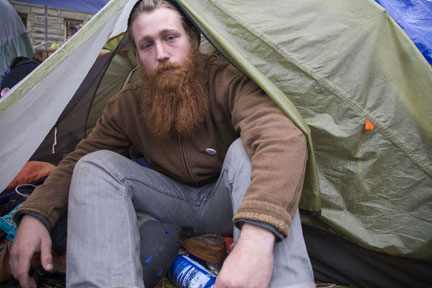
For more articles and images, see https://dbacon.igc.org.
See also “Illegal People – How Globalization Creates Migration and Criminalizes Immigrants” (Beacon Press, 2008) Recipient: C.L.R. James Award, best book of 2007-2008.
See also the photodocumentary on indigenous migration to the US “Communities Without Borders” (Cornell University/ILR Press, 2006).
See also “The Children of NAFTA, Labor Wars on the U.S./Mexico Border” (University of California, 2004)
Join us in defending the truth before it’s too late
The future of independent journalism is uncertain, and the consequences of losing it are too grave to ignore. To ensure Truthout remains safe, strong, and free, we need to raise $46,000 in the next 7 days. Every dollar raised goes directly toward the costs of producing news you can trust.
Please give what you can — because by supporting us with a tax-deductible donation, you’re not just preserving a source of news, you’re helping to safeguard what’s left of our democracy.